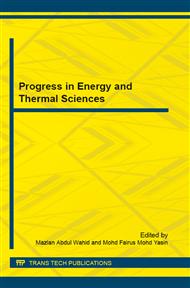p.58
p.63
p.69
p.74
p.79
p.86
p.91
p.96
p.101
Nonlinear Resonance Suppression as Distorting and Saturating Source in Voltage and Current of Power Transformer: UPFC and STATCOM Performance Evaluation
Abstract:
Non linear resonance usually resonates in network which is consisting of ferromagneticcore. When distributed capacitance calculated form circuit breaker; mainly circuit breaker and cablecapacitance; after switching and opening the network feed apparatus, magnetization current on ferromagnetic core jump to saturation. Duration of ferroresonance is deeply relying on capacitance, and itwill be decaying by disembarking total store energy. Although, ferroresonance commence by switching circuit breaker off; protecting relay and other protecting schemes have no reaction, because thelast protection step for saving a device is a circuit breaker. There is no reported method to mitigatedisruptive phenomenon; which elder publication focus on the explosion of capacitive transformer,melting of power transformer core lamination and arresters problem. This work is tried to dampingferroresonance and reducing devastation effect on the apparatus. While, protecting devices is useless,fault point topology mutating by FACTS to control and decrease this phenomenon. FACTS deviceis settled at the upstream of apparatus to improve power quality, is switched on at initiating momentresonating. Modeling and simulating of ferroresonance are done by the actual value of transformerand other power system related devices extracted by UTM-TNB.
Info:
Periodical:
Pages:
79-85
Citation:
Online since:
January 2016
Price:
Сopyright:
© 2016 Trans Tech Publications Ltd. All Rights Reserved
Share:
Citation:


